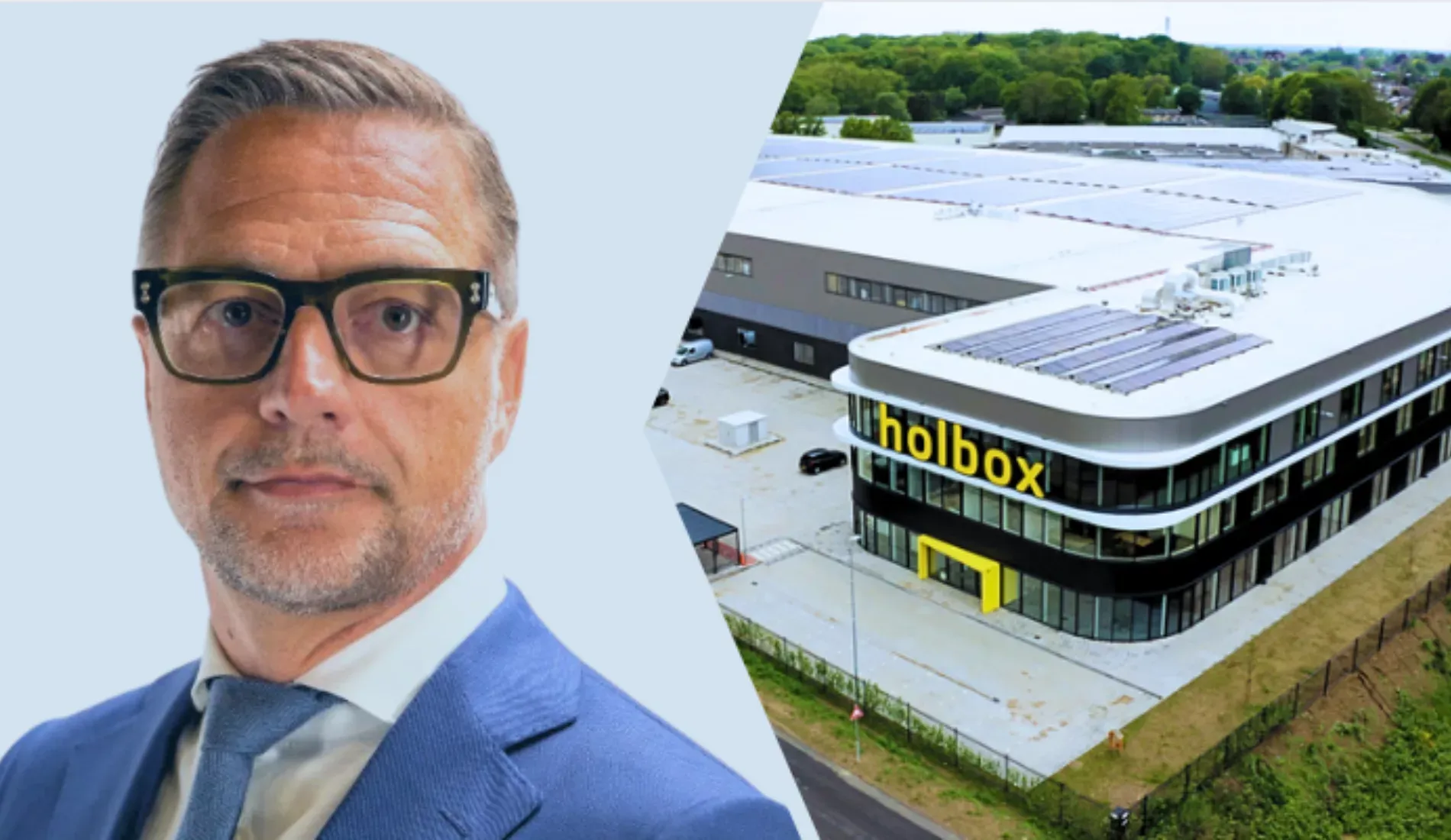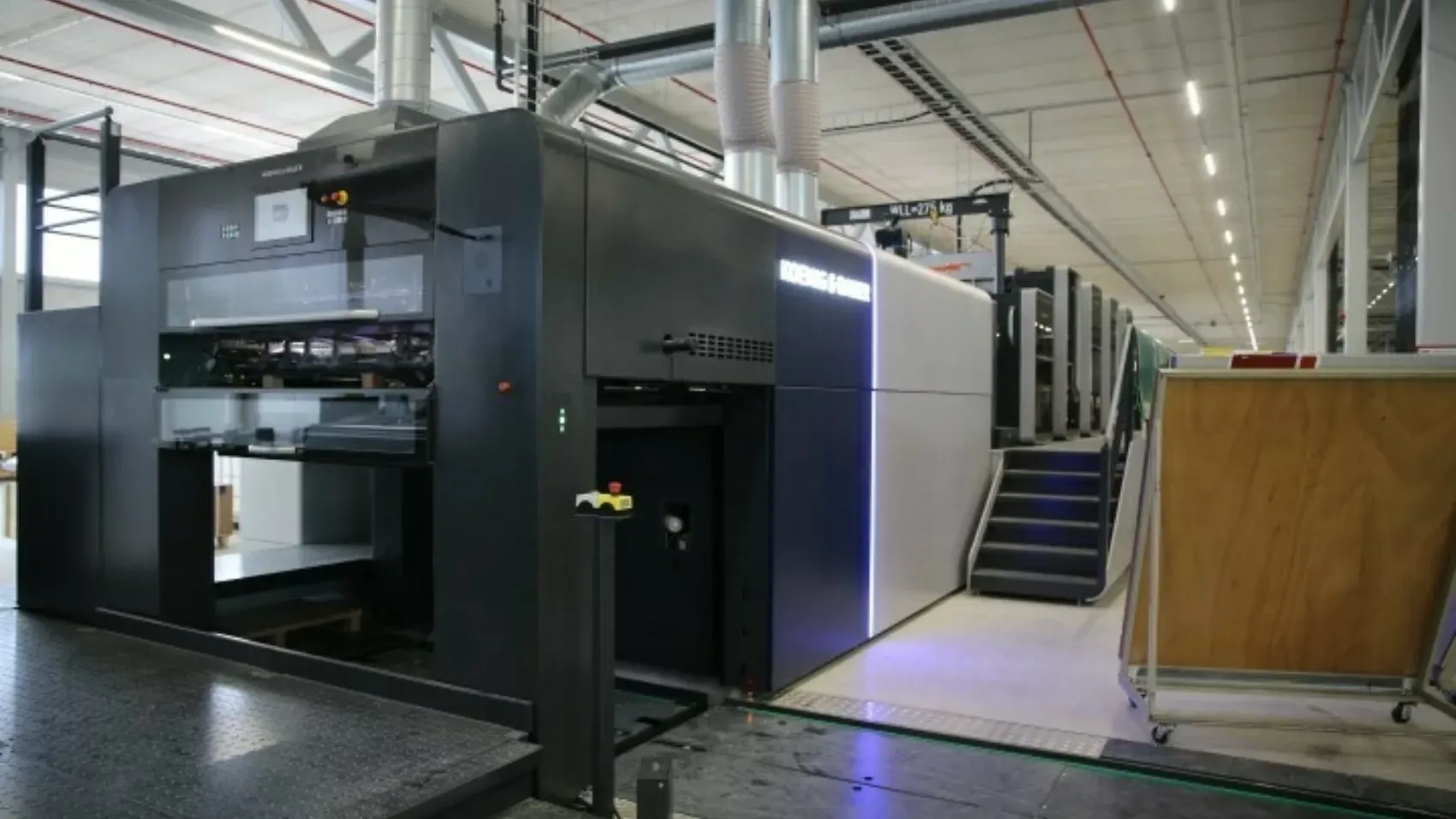As a commercial company, how do you go about being successful and sustainable at the same time? In a series of interviews we show that some entrepreneurs are already pretty far along in this. In part 1: Martijn Hol, CEO of cardboard display manufacturer Holbox. "As a family business, it's easier to get people on board with the green idea."

If you walk around in an Albert Heijn or Kruidvat supermarket, chances are that your eye will fall on colorful cardboard displays containing - new - products from Nutricia, Heineken or L'Oréal, for example. It is even more likely that these eye-catchers are made by the Roermond family business Holbox, manufacturer of cardboard displays, and market leader in Europe. Martijn Hol is the second generation at the helm of the company, which his parents started in 1976. Since then, Holbox has made great strides when it comes to sustainability.
When I think of cardboard, I don't immediately think of sustainability...
"All our cardboard carries the FSC label for responsible forest management. Old' displays are collected in the store as waste paper and return to the chain as raw material. This can be done up to 25 times, then it is made into toilet paper. Furthermore, we use elephant grass, for which no tree was cut at all. With this, we also meet the specific requirements of a customer like Milka: they only want to purchase displays made of grass cardboard - this fits with the chocolate manufacturer's focus on sustainable cultivation and the environment."
Your business process, is it also sustainable?
"Yes it is. Design, production and distribution are done as green as possible. We design our displays as compact and light as possible, also to reduce transport movements, we call this ECOdesign. We are also one of the first companies to work with vegetable-based inks. And all our machines run on sustainably generated electricity from Vattenfall, which comes from wind farms in the Netherlands."
How big are your investments in sustainability anyway?
"In June we moved to an energy-neutral building in Roermond (estimated construction cost: 25 million euros, ed.). We installed 3,000 solar panels on the roof to meet our energy needs. The building was built entirely with sustainable materials. Even our wall coverings, floor coverings and tiles are 100 percent biodegradable. Furthermore, there will be a new, huge printing press replacing our old UV printing press."
"Previously, we printed with UV ink; it has the highest gloss values. One of our biggest customers is cosmetics company L'Oreal. For them, the more gloss, the better. But like many other customers, L'Oréal is focusing more and more on sustainability. Partly for this reason, we work with water-based lacquer. This has to be built up in several printing layers to achieve the same gloss values as UV lacquer. For this we had a special printing press built, one that did not yet exist. That press alone cost about 5.5 million euros. So these are serious investments. But sustainability always pays off."

"Our building is completely built with sustainable materials."
Will your power consumption also be lower?
"The new printing press uses half as much power as the old one anyway. That's good, because at some times of the day we have to deal with too little capacity on the electricity grid. We therefore started working with Vattenfall to see how we can continue to operate with less electricity consumption. With 25 small metering stations in our building, we now see exactly where the big power consumers are, and which machines we need to turn on in phases to stay below the peak load. Not for nothing do we score 'excellent' in our BREEAM certification. In other words, we make super-smart use of available energy in our building."
"Furthermore, we are looking at the possibility of storing solar energy in batteries. Vattenfall is an important sparring partner in this. A kind of joint-venture construction with the energy supplier is among the options."
What are the biggest challenges when it comes to sustainability?
"That you can't conclusively prove sustainability. How do you measure how green you are? Every plastic bottle these days says on it that it is made from 'recycled' plastic, but is it 1 or 10 percent recycled material? You may use the recycle logo as early as 1 percent - unfairly, I think. Large accounting firms like KPMG are working toward uniform measurability, to avoid such greenwashing. A good development."
Is it harder or easier for a family business than, say, a shareholder company, to focus on sustainability?
"If the family is behind the green idea, it is easier to get the whole organization on board. We can more quickly decide to stop buying a certain product if it contains harmful substances. The lines are shorter, the involvement is greater. If we have to make large investments for the long term and we write a few down years on paper, that's possible. I don't have to satisfy shareholders year after year with even bigger profits."
What drives you to be so committed to sustainability?
"Twenty years ago, I was already worried about the growing mountain of waste, the finiteness of resources, overpopulation, global warming - although it is more emphatic now than it used to be. What are my children's children going to find later on? For me, that has been the starting point for looking at how we can be a commercially successful company with an eye for sustainability. That easily goes hand in hand, as we prove."
View the video to see how sustainability and success go hand in hand at family business Holbox.
Source: change.inc